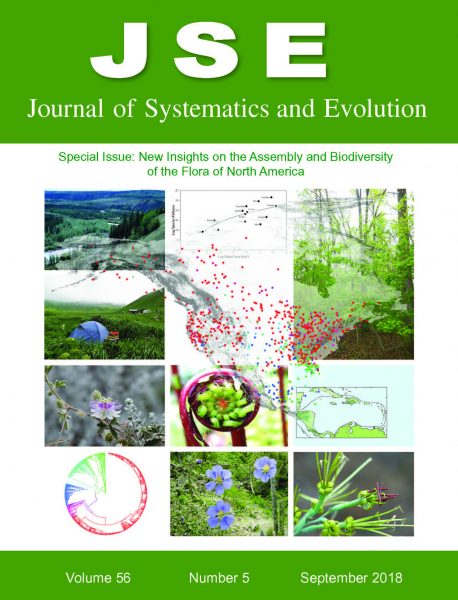UAF researcher co-edits journal issue on North America's plants
October 16, 2018
 Ten papers from a 2017 botanical symposium in China co-organized by the University
of Alaska Museum of the North’s Steffi Ickert-Bond have been published in a special
edition of an academic journal.
Ten papers from a 2017 botanical symposium in China co-organized by the University
of Alaska Museum of the North’s Steffi Ickert-Bond have been published in a special
edition of an academic journal.Ickert-Bond, the museum’s herbarium curator, and Smithsonian postdoctoral fellow AJ Harris organized the symposium, titled “New Insights on the Assembly and Biodiversity of the Flora of North America,” for the 2017 International Botanical Congress. The congress, held every six years, drew almost 7,000 people to Shenzhen, China.
The Journal of Systematics and Evolution published a special issue in September 2018 featuring 10 of the 12 papers presented at the North American flora symposium. Ickert-Bond and Harris co-edited the edition, which highlights the importance of emerging and traditional methods of exploring and documenting North America’s plant life.
The volume also includes a contribution by former UAF Department of Biology and Wildlife graduate student Monte Garroutte, together with Ickert-Bond, UAF biology Professor Falk Huettmann and research associate Cam Webb. Their work coupled a classic study in floristics of the Aleutian Islands with new machine learning models to better understand patterns in the archipelago's plant diversity.
Several papers in the volume feature spatial phylogenetic approaches to studying biodiversity. Spatial phylogenetics integrates evolutionary history with ecological information, such as preferences of species for particular abiotic and biotic habitat features.
Other papers in the volume have Alaska connections. Alan Graham reviewed the role of land bridges, ancient environments and migrations in the assembly of North America’s flora. Alaska Quaternary Center faculty member Mary Edwards, Institute of Arctic Biology research associate Scott Armbruster and former UAF graduate students Andrea Lloyd and Carl Roland used the geographic and environmental ranges of tundra and steppe species to infer ancient climatic conditions of the Bering land bridge, which once facilitated migrations between North America and eastern Asia.


